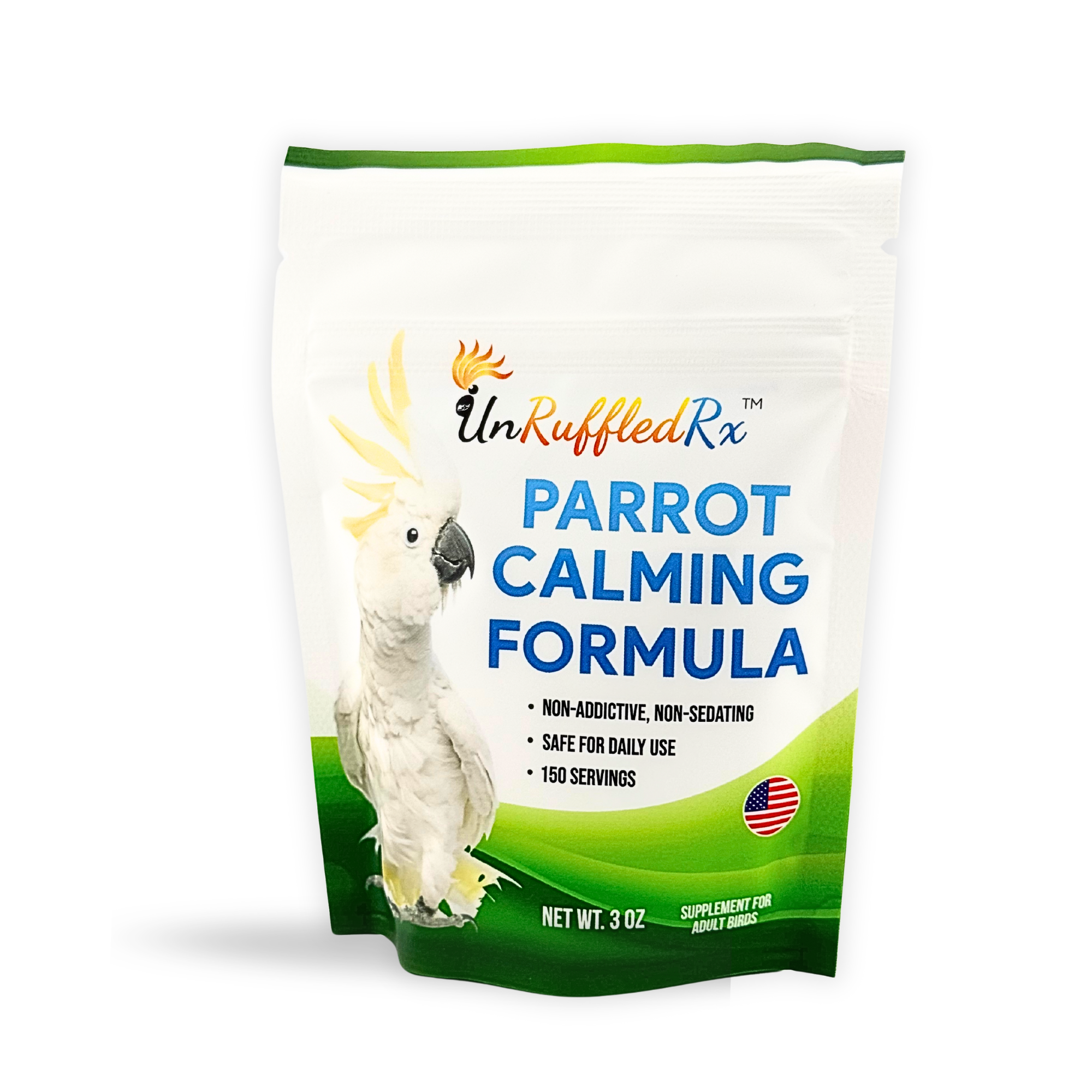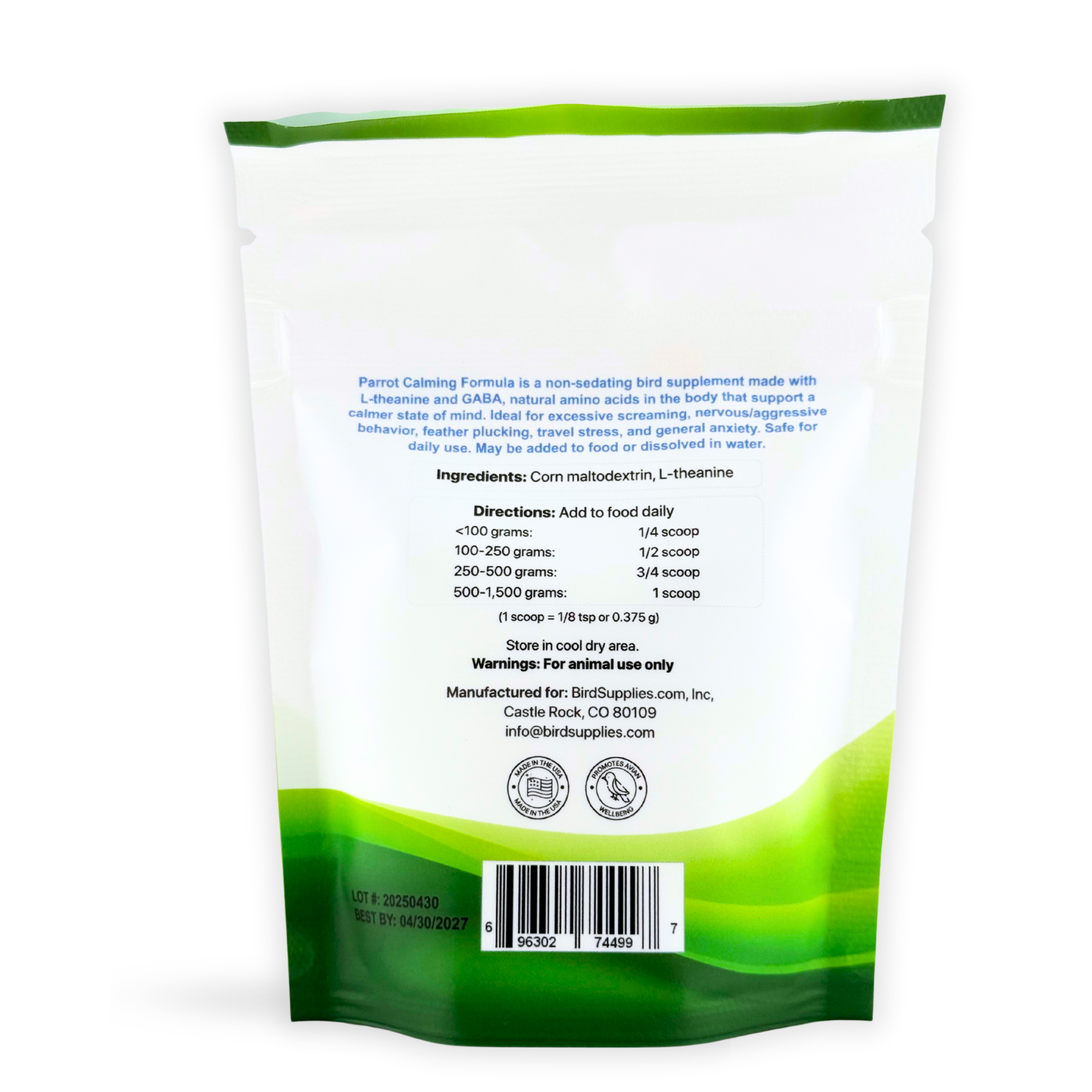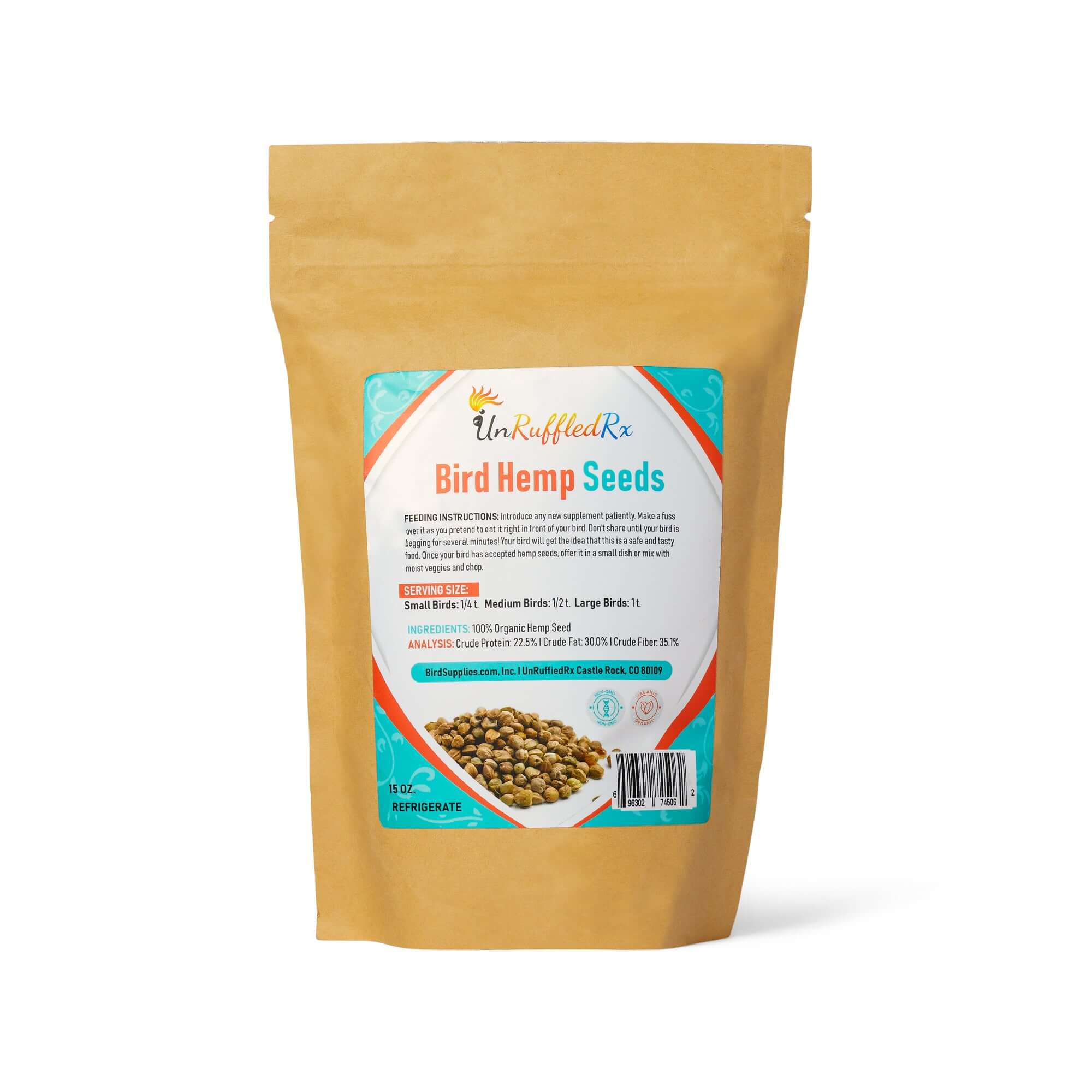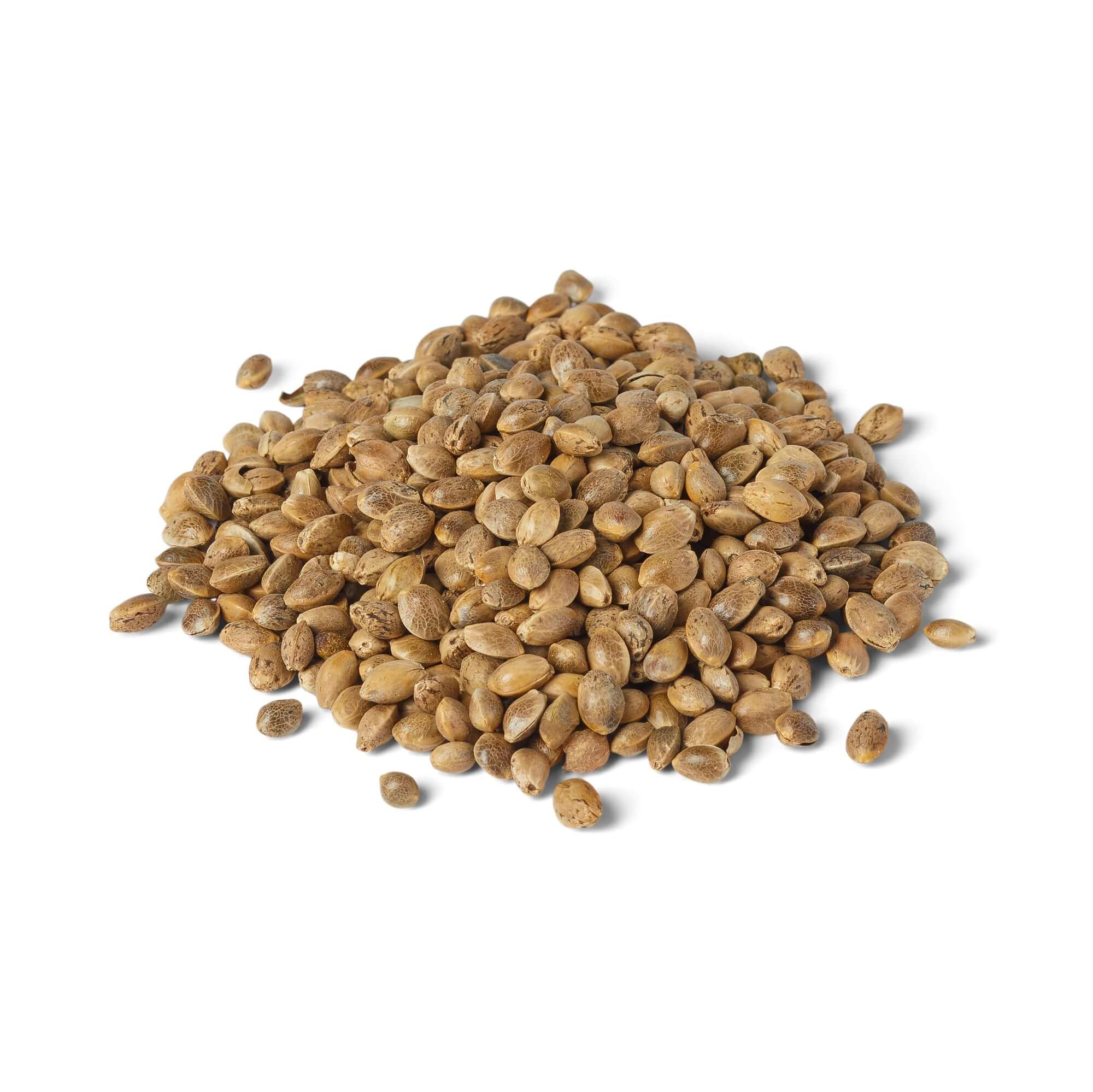Table of Contents
- Do Birds Have Emotions?
- How to Recognize Bird Emotions
- The Importance of Emotional Enrichment for Parrots
- Balancing Sensitivity and Training: "Parronting" Your Bird
- The Long-Term Impact of Emotional Health on Parrots
- Frequently Asked Questions (FAQs)
- Conclusion
In this blog post, we explore the complex emotions of parrots and how they impact behavior. Understanding your parrot's feelings is key to building a stronger bond and addressing common issues like screaming, biting, and feather plucking. Dive into our FAQs to learn how to support your bird's emotional well-being and create a happier, healthier environment for your feathered friend.
Do Birds Have Emotions?
Scientific Evidence of Bird Emotions
EYes, birds do have emotions! Scientists have studied bird emotions for years and found that birds, especially parrots, can feel a wide range of emotions like joy, fear, and even love. Research shows that birds have parts of their brain similar to humans, which help them process these feelings.
Comparing Bird and Mammal Emotions
Bird emotions are a lot like the emotions of mammals, including us! Both birds and mammals have brain areas that manage emotions, such as the amygdala. However, birds may express their emotions differently, like through their unique calls or body movements, instead of facial expressions like we do.
How to Tell What Your Parrot is Feeling
Bird emotions are a lot like the emotions of mammals, including us! Both birds and mammals have brain areas that manage emotions, such as the amygdala. However, birds may express their emotions differently, like through their unique calls or body movements, instead of facial expressions like we do.
How to Recognize Bird Emotions
Reading Behavioral Cues
You can learn a lot about your parrot’s emotions just by watching how they act. A calm and happy parrot might preen its feathers or play with toys, while a nervous or upset bird could pace, pluck feathers, or hide. By noticing these behaviors, you’ll start to understand when your parrot feels safe, anxious, or excited.
The Role of Environment in Bird Emotions
Your parrot's environment plays a big part in their emotions. A noisy room or too many changes in their space can cause stress and fear. On the other hand, a calm, familiar environment helps your bird feel secure and happy. Simple things like their cage location or who’s around them can change how they feel.
A Real-Life Example of Emotional Behavior in Parrots
One parrot owner noticed her bird screamed every time she left the room. To help, she moved the cage to a spot where her bird could always see her. She also started using special calls and whistles to let her bird know she was nearby, since parrots are flock animals and feel safer when they can hear their "flock." After making these changes, the bird’s screaming reduced a lot. This is just one example of how understanding your parrot’s emotions can help with their behavior.

Why Are Our Pet Birds So Emotional?
Strong Bonds with Their Flock
In the wild, birds rely heavily on their flock for survival. Flock behavior is crucial for finding food, avoiding predators, and caring for each other. These strong social bonds help birds learn vital life skills and regulate their emotions. When birds are removed from their natural flock and raised in human care, they lose the opportunity to learn these survival and emotional regulation skills from their parents and flock mates.
For pet birds, their human family becomes their flock. When baby birds are removed from their parents for hand-feeding purposes, they miss out on these crucial learning experiences. If these birds don't form healthy bonds with their human flock, their emotional well-being can become even more complicated. Rescue birds, in particular, need extra special care to help them learn how to trust and bond with their new human family.
High Intelligence and Awareness
Parrots and many other birds are incredibly smart, which means they are more aware of their surroundings and their relationships. This intelligence allows them to experience a wide range of emotions, from joy to frustration, much like humans do.
Dependence on Routine and Stability
Birds thrive on routine and stability. Sudden changes in their environment or daily schedule can cause stress and anxiety, making them more emotional. A predictable routine helps them feel safe and secure, reducing emotional outbursts.
Balancing Sensitivity and Training: "Parronting" Your Bird
Understanding the Parrot-Human Emotional Dynamic
The bond between parrots and their human caregivers is built on trust, love, and communication, much like any relationship. Parrots are highly emotional creatures, and they often mirror the feelings of their human flock. When you’re calm and caring, your parrot feels safe and secure, but when there’s stress or tension, they can pick up on it and become anxious too. Understanding this emotional dynamic helps create a stronger, happier bond with your bird.
Positive Reinforcement Training
Positive reinforcement is a training method that focuses on rewarding desired behaviors, making your parrot want to repeat those behaviors again and again. When your parrot does something you like—such as stepping onto your hand or staying calm in their cage—you immediately reward them with a treat, praise, or affection. Over time, your bird learns that good behavior leads to positive outcomes, and they start choosing those behaviors more often. Meanwhile, behaviors that don’t get reinforced, like screaming or biting, gradually fade away because they no longer get the attention they once did.
For example, if your bird tends to scream for attention, you can train them to whistle instead by rewarding them every time they make a pleasant sound. If your parrot bites out of fear, you can teach them to gently touch your hand with their beak by rewarding calm interactions. Another great replacement behavior is encouraging your bird to stay calmly perched when they’re anxious, instead of pacing or flapping around the cage.
By focusing on positive reinforcement, you not only reduce unwanted behaviors but also build a more trusting and happy relationship with your parrot.

|
Hot Tip: Do a "Time-Study" to try to discover what is triggering the unwanted behavior. |
Managing Behavioral Issues with Empathy
When we learn to read our bird's body language, we can recognize their emotions as they begin to surface, allowing us to respond before those feelings become intense. This early detection helps in preventing unwanted behaviors and fosters a deeper connection with our feathered friends. By understanding these subtle cues, we can create a more harmonious and trusting relationship with our birds.
When dealing with unwanted behaviors, it’s important to approach your parrot with empathy. Understand that many of these behaviors stem from emotional distress or fear. Instead of reacting with frustration, take a moment to consider what might be causing the behavior. When you remove the trigger, the behavior subsides.
Whether it’s boredom, loneliness, or a sudden change in their environment, addressing the root cause with patience and care will help your parrot feel more secure and reduce the unwanted behavior over time.
|
Hot Tip: When you remove the environmental issue that’s frustrating your bird, the unwanted behavior subsides. By taking away the source of upset, you prevent the buildup of negative reactions. |
The Long-Term Impact of Emotional Health on Parrots
The Connection Between Emotions and Physical Health
A parrot’s emotional well-being is closely linked to their physical health. When a parrot is stressed or anxious, it can lead to a range of physical issues, from feather plucking to digestive problems. Just like in humans, chronic stress can weaken a bird’s immune system, making them more susceptible to illness. Ensuring your parrot feels safe, loved, and emotionally secure is essential for their overall health and longevity.
Preventing Emotional Distress in Parrots
Preventing stress and anxiety in your parrot starts with creating a stable and nurturing environment. Providing a balanced diet rich in nutrients supports their physical and emotional health. Establishing a daily routine with regular feeding times, play, and interaction helps your bird feel secure and less anxious. Additionally, ensuring their environment is calm and free from loud noises or sudden changes can greatly reduce stress and keep your parrot feeling happy and content.
Ongoing Emotional Care
Caring for your parrot’s emotional health isn’t a one-time task; it’s an ongoing commitment. Regularly spending quality time with your bird, offering mental stimulation through toys and training, and paying attention to their emotional cues are all important parts of their care. By making emotional well-being a consistent focus, you’ll help your parrot live a healthier, happier life, strengthening the bond between you and your feathered friend over time.
Bonus Section: Helping Rehomed & Rescue Birds Calm Down & Relax
Rescuing or rehoming a bird is a rewarding experience, but it comes with unique challenges. These birds may have experienced neglect, abuse, or simply the stress of being in a new environment. Understanding what your bird needs and how to cope with their behaviors can help you create a safe and comforting space where they can thrive.
What Birds Need
- Stability and Routine: Birds thrive on routine. Establish a consistent daily schedule for feeding, playtime, and sleep to help them feel secure.
- Safe Spaces: Provide a quiet and calm environment where your bird can retreat if they feel overwhelmed. This could be a covered area in their cage or a separate room.
- Gentle Socialization: Slowly introduce your bird to new experiences and people. Use positive reinforcement to build trust and encourage social interaction.
- Mental Stimulation: Offer toys, foraging opportunities, and interactive activities to keep their minds engaged and reduce stress.
- Patience and Understanding: It may take time for your bird to adjust to their new home. Be patient and observe their behavior to understand what triggers their stress and what helps them relax.
How Rescue Bird Parronts Can Cope and Help
- Start Slowly: Avoid overwhelming your bird with too many new experiences at once. Gradually introduce changes and new activities.
- Use Positive Reinforcement: Reward your bird for calm behavior and interactions. This helps build trust and encourages positive behaviors.
- Stay Calm: Birds are sensitive to the emotions of their human caregivers. Stay calm and composed, even if your bird is exhibiting challenging behaviors.
- Avoid Punishment: Never punish your bird for unwanted behaviors. Instead, redirect their actions to more appropriate activities and reward them when they comply.
- Seek Professional Help: If your bird's behavior is particularly challenging, consider consulting an avian behaviorist or a vet experienced with rescue birds.
Behavior Management Table for Rescues / Rehomed Birds
| Behavior | 😊 DO THIS | 🛑 DON'T DO THIS |
|---|---|---|
| Afraid of Hands | Offer treats from a distance, gradually moving closer. Offer favorite treats from a flat hand. Let your bird approach your hand when they're ready. | Force your hand towards the bird or try to grab them. |
| Cage Bound | Engage in quiet interactions, like reading a child's book or singing basic songs from a safe distance. Create a whistle that is unique for your rescue bird and call to them throughout the day. Leave the cage door open during calm times and place treats just outside the cage to encourage exploration. | Force the bird out of the cage or remove them by hand. |
| Plucking Feathers | Ignore the plucking behavior while reinforcing and rewarding calmer behaviors. Offer basic foraging toys like an open foraging box with highly preferred treats or easy-to-master puzzle toys. | React negatively to the plucking or ignore their need for mental stimulation. |
| Screaming | Acknowledge the bird when they're calm and quiet or exploring and playing. Offer attention and treats during these moments. | React or give attention during screaming episodes, as this reinforces the behavior. |
| Biting | Use a hand-saver perch instead of direct hand contact. Help them feel safe by moving slowly and calmly. | Ignore your bird. Never yelp, yell, or scold them when they bite, as this can increase fear and mistrust. |
By following these strategies, you can help your rescued or rehomed bird adjust to their new environment, reduce stress, and build a strong, trusting relationship.
Frequently Asked Questions
DO PARROTS REALLY HAVE EMOTIONS LIKE HUMANS DO?
Yes, parrots do have emotions similar to humans, including feelings of joy, fear, love, and even sadness or grief. Parrots can mourn the loss of a companion, whether it's another bird or a human they were close to. Their emotional lives are complex, and these feelings can deeply influence their behavior.
HOW CAN I TELL IF MY PARROT IS HAPPY OR SAD?
A happy parrot will often sing, chirp, or whistle, and may engage in playful activities like exploring or playing with toys. On the other hand, a sad or stressed parrot might become quiet, lose interest in interacting, or engage in behaviors like feather plucking. Pay close attention to changes in your parrot’s behavior to understand their emotional state.
WHY DOES MY PARROT SCREAM WHEN I LEAVE THE ROOM?
Parrots are flock animals and feel safest when they are close to their "flock," which includes you. Screaming when you leave the room could be a sign of separation anxiety. To help, try placing their cage in a spot where they can see you more often, and use familiar calls or whistles to reassure them that you’re nearby. You can also introduce calming aids like Parrot Calming Formula or SereniTea to reduce anxiety.
WHAT CAN I DO TO HELP MY PARROT FEEL LESS ANXIOUS?
Establishing a stable routine, providing plenty of enrichment activities, and ensuring they have a quiet, safe space can all help reduce anxiety. You might also consider natural calming aids like Chamomile or Parrot Calming Formula to help soothe your bird’s nerves.
CAN PARROTS EXPERIENCE DEPRESSION OR LONELINESS?
Yes, parrots can feel depressed or lonely, especially if they are left alone for long periods without interaction. Ensuring they have plenty of social interaction, mental stimulation, and opportunities to engage in natural behaviors like foraging can help prevent these feelings.
HOW DO I BUILD A STRONGER BOND WITH MY PARROT?
Spend quality time with your parrot every day, engage in interactive play, and practice positive reinforcement training. Offering treats, praise, and affection when they display desired behaviors helps strengthen your bond. Also, make sure your parrot has plenty of opportunities to exercise and explore their environment.
WHAT ARE SOME SIGNS THAT MY PARROT IS STRESSED?
Signs of stress in parrots can include feather plucking, screaming, biting, pacing, or loss of appetite. A stressed parrot might also become more withdrawn or aggressive. Observing these behaviors can help you address the underlying causes of stress.
HOW DOES MY PARROT’S ENVIRONMENT AFFECT THEIR EMOTIONS?
Your parrot’s environment plays a huge role in their emotional well-being. A noisy, chaotic environment can lead to stress and anxiety, while a calm, enriched environment with plenty of mental and physical stimulation can help keep them happy and healthy.
WHAT SHOULD I DO IF MY PARROT IS BITING OUT OF FEAR?
If your parrot is biting due to fear, it’s important to avoid punishment, which can make the fear worse. Instead, focus on positive reinforcement by rewarding calm behavior. Gradually build their trust by offering treats and speaking softly, and ensure they have a safe, comfortable space where they feel secure.
IS IT NORMAL FOR PARROTS TO PLUCK THEIR FEATHERS WHEN THEY’RE UPSET?
Feather plucking can be a sign of stress, boredom, or underlying health issues. It’s important to address the root cause, whether it’s environmental changes, lack of stimulation, or health concerns. Providing foraging opportunities, toys, and a calming routine can help, along with consulting a vet if the behavior persists.
In conclusion:
In this blog post, we explored the complex emotions of parrots and how they impact behavior. Understanding your parrot's feelings is key to building a stronger bond and addressing common issues like screaming, biting, and feather plucking. Dive into our FAQs to learn how to support your bird's emotional well-being and create a happier, healthier environment for your feathered friend.
Related Posts:
2 Important Things You Need To Do Now To Help Your Bird With Separation Anxiety
Do Birds Mourn? How To Help Your Grieving Bird Recover
Understanding Bird Emotions: A Guide To Better Bonding
References:
Clubb, S. L., Schubot, R. M., Joyner, K., Phillips, A., & Brisbin, I. L. (1994). The behavioral, nutritional, and environmental causes of feather picking in psittacine birds. Journal of Avian Medicine and Surgery, 8(1), 13-17. https://doi.org/10.1647/1082-6742(1994)008[0013:TBNAEC]2.0.CO;2
Graham, D. L. (1996). Behavioral disorders of cockatoos. Journal of Avian Medicine and Surgery, 10(3), 138-148. https://doi.org/10.1647/1082-6742(1996)010[0138:BDOC]2.0.CO;2
van Zeeland, Y. R. A., Spruit, B. M., Rodenburg, T. B., Riedstra, B., van Hierden, Y. M., Buitenhuis, B., Korte, S. M., & Lumeij, J. T. (2009). Feather damaging behavior in parrots: A review with consideration of comparative aspects. Journal of Avian Medicine and Surgery, 23(2), 87-99. https://doi.org/10.1647/2008-027
Wingfield, J. C., & Ramenofsky, M. (1999). Stress in captive birds: Behavior, physiology, and neuroendocrinology. Journal of Avian Medicine and Surgery, 13(3), 131-139. https://doi.org/10.1647/1082-6742(1999)013[0131:SICBBP]2.0.CO;2
Link to this blog
Burroughs, D. (2024, August 18). Understanding bird emotions: A guide to better bonding. BirdSupplies.com. https://birdsupplies.com/blogs/news/144489991-understanding-bird-emotions-a-guide-to-better-bonding
Diane Burroughs, LCSW, is a licensed psychotherapist specializing in avian anxiety disorders, nervous bird behaviors, and overall bird care. With training in ABA therapy and certification in Nutrition For Mental Health, Diane has authored several books on bird behavior and offers expert consultations for resolving issues like feather plucking and bird anxiety..
Her work has been featured in the Journal of Avian Medicine and Surgery and presented at Exoticscon. Diane also mediates the Feather Plucking Help group on Facebook, offering support to parrot owners. With over 30 years of experience, Diane has developed thousands of successful individualized behavior plans, promoting parrot wellness and excellent bird care.
TAGS: #BirdEmotions #DoBirdsHaveEmotions #ParrotEmotions
SHARING IS CARING! 📣
Love what you read? Help spread the word on Facebook & Instagram 🌟
💬 Leave a comment below and let us know your thoughts!














